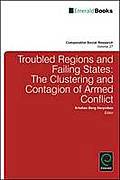Three successful uprisings in mid-2003 – in Georgia, Ukraine and Kyrgyzstan – introduced the notion of the ‘colour revolution’, usually understood as an organised unarmed public uprising aimed at replacing a discredited regime with a more democratic government. Careful examination shows that, besides these cases and the overthrow of the Milosevic regime in Yugoslavia in 2000, eight more cases could be added to the list of colour revolutions, making it possible to investigate characteristic features of the phenomenon and to evaluate the trend of failure in attempts at revolution since 2005. In a deviation from classical models, economic grievances are found to have little bearing on public mobilisation for revolutionary causes; external influences, on the other hand, have considerable impact. In the second half of the 2000s, Russia’s assertive counter-revolutionary stance prevailed over the United States’ declining capacity and the diminishing gravitation of the EU, so all revolutionary attempts failed, including the April 2009 unrest in Chisinau, Moldova. Analysis of such characteristics of ‘colour revolutions’ as close correlation with elections, non-violent strategies of opposition and implicit connection with ‘frozen conflicts’ despite the absence of any ethnonationalist agenda makes it possible to arrive at a more precise definition of the phenomenon and to identify several potential revolutionary situations. The economic recession that began in late 2008 will inevitably transform the social context of ‘colour revolutions’, which might become less controllable and more violent.
Baev, Pavel K. (2010) Re-examining the 'Colour Revolutions': The Turn of the Tide from Belgrade to Ulan Bator, Comparative Social Research 27: 249–276.








